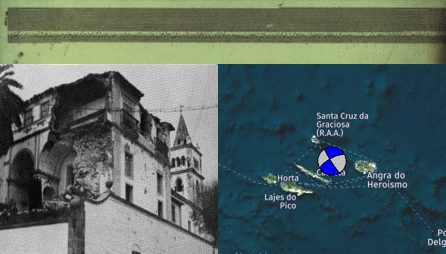The Portuguese Institute of the Sea and Atmosphere, the Instituto Superior Técnico, the Faculty of Sciences of the University of Lisbon and the Associated Laboratory Instituto Dom Luiz are launching a national macroseismic survey on the occasion of the 40th anniversary of the earthquake on January 1, 1980 .
This earthquake occurred at 16:42 UTC with a magnitude of 6.9, with the epicenter located in the sea between Terceira and S. Jorge and an estimated focal depth of 10 km, and was felt in all islands of the Azores archipelago, with the exception of the Flowers and Raven.
The earthquake was felt with grade VIII/IX of the modified Mercalli scale (MM56) in the locality of Doze Ribeiras on Terceira Island; grade VII/VIII in Santo Antão and Topo in S. Jorge, grade VI/VII in Luz, Carapacho, Ribeirinha and Guadalupe in Graciosa, grade VI in Silveira on Pico island and grade IV/V in Horta, Flamengos and Praia do Almoxarife on the island of Faial.
The earthquake caused great damage on the islands of Terceira, S. Jorge and Graciosa, with dozens of deaths (61), hundreds of injuries (300) and thousands of displaced people, with more than 15000 homes being damaged or even completely destroyed.
With its epicenter located in the sea between Terceira and S. Jorge, this earthquake caused a tsunami of small magnitude, recorded in the tide gauges of Angra do Heroísmo and Horta with amplitudes of 28 cm and 5 cm respectively.
Even after the earthquake of January 01, 1980, Angra preserved the best part of its monumental heritage and a homogeneous urban complex, so in 1983 UNESCO (the United Nations organization for education and culture) accepted to integrate the historic center of Angra do Heroísmo on its list of World Heritage sites.
This earthquake occurred at a time when seismic instrumentation was not yet sufficiently developed, and it was essential to complement the few instrumental records from that time with the testimonies of the affected population.
Currently, communication technologies allow for a much broader data collection than was possible at that time, so now is the right time to carry out a macro-seismic survey on the effects of this very important earthquake.
The survey can be accessed at http://survey.ipma.pt/index.php/1980/lang/pt/newtest/Y



















Comments